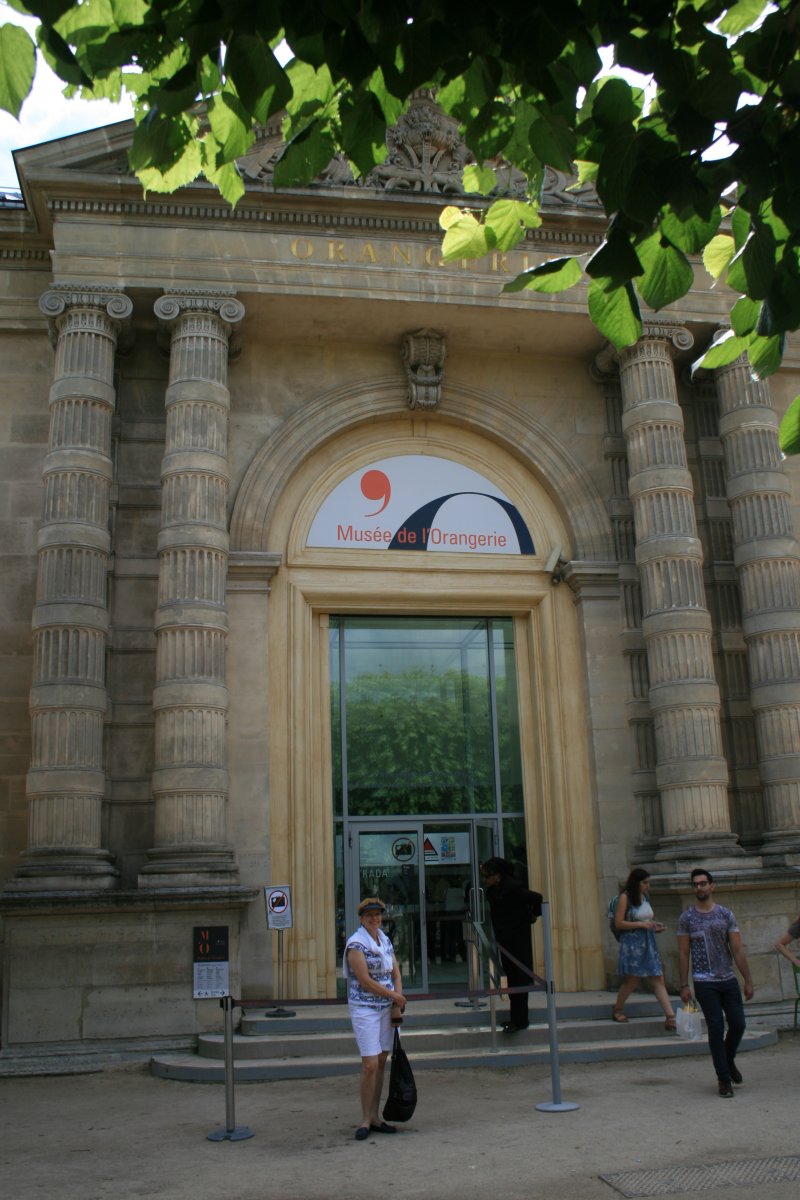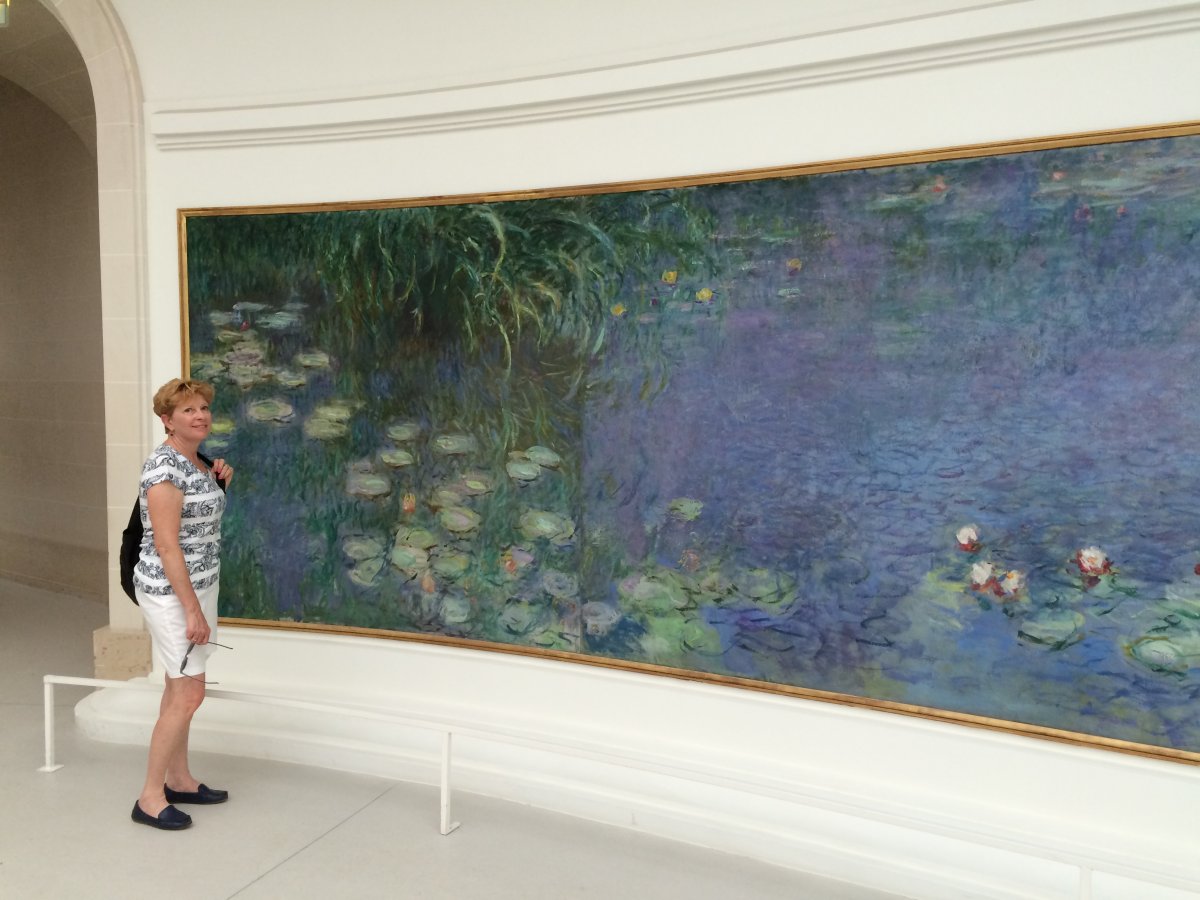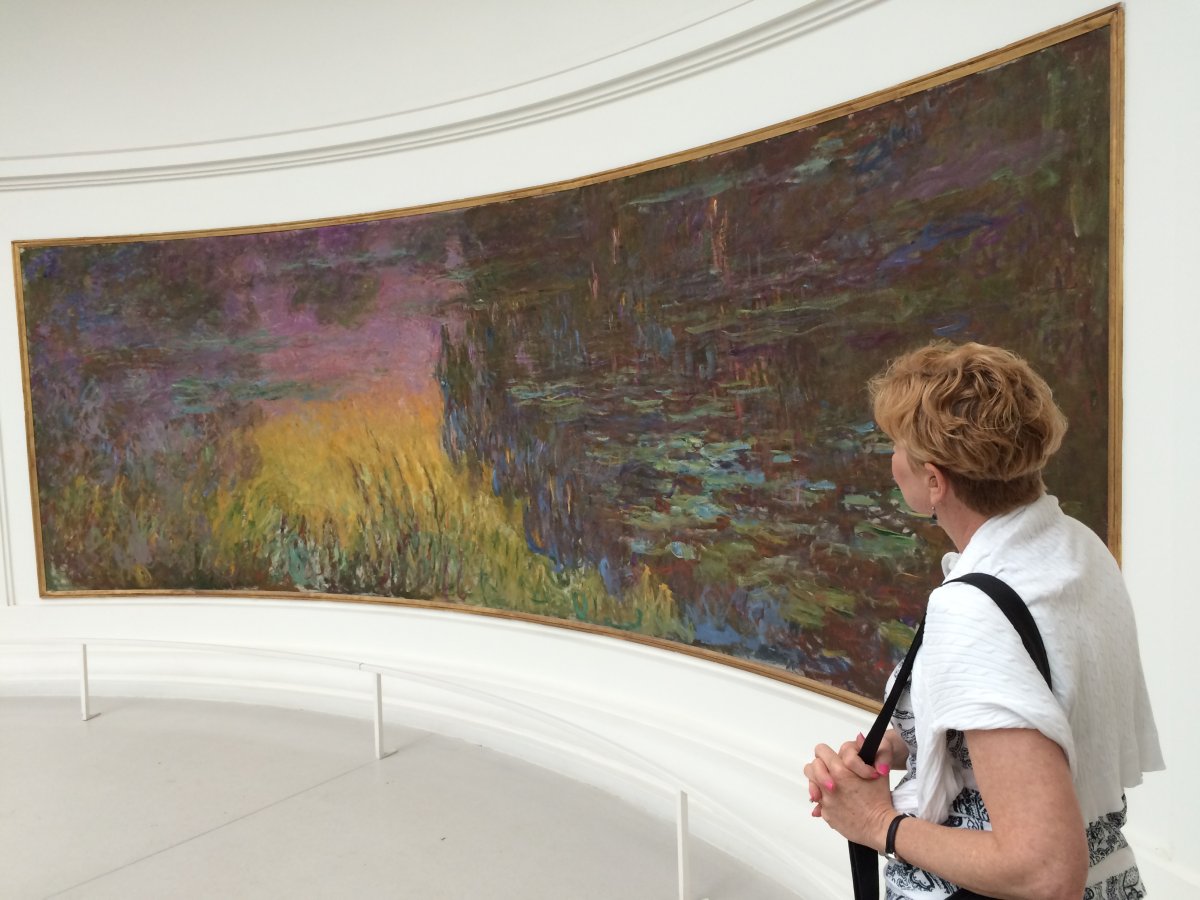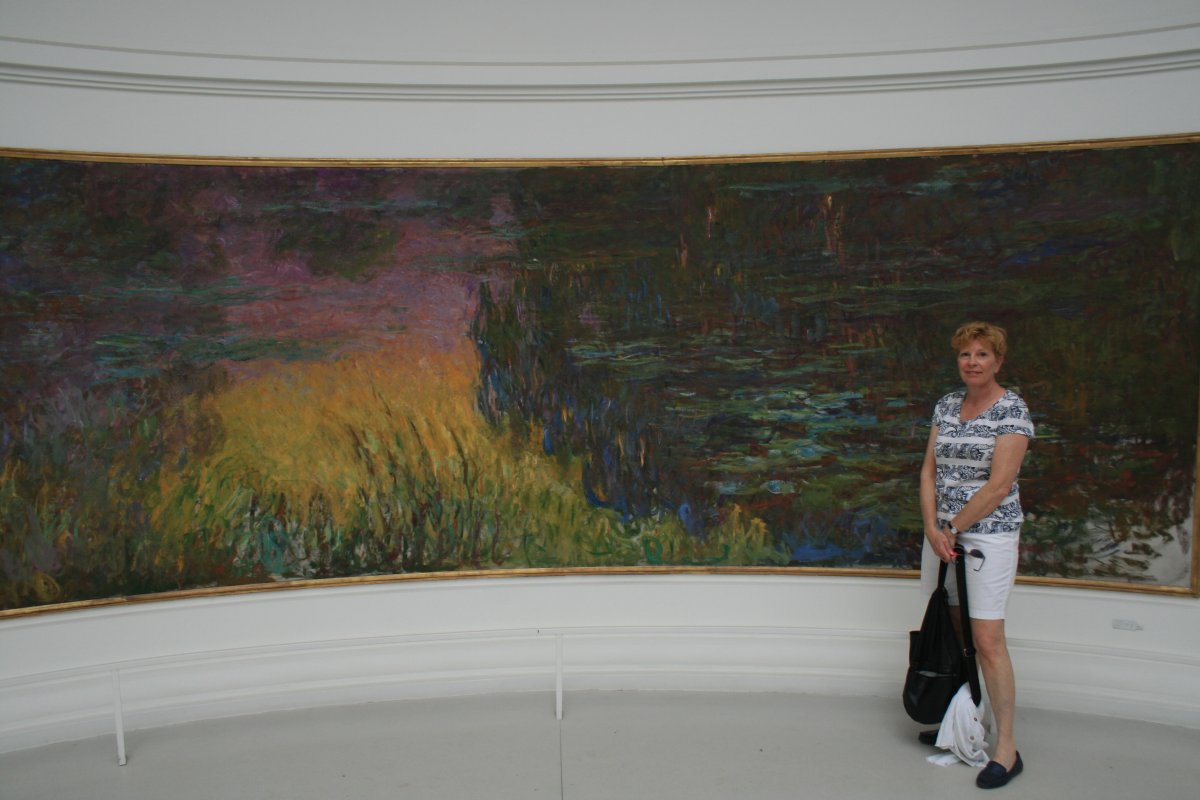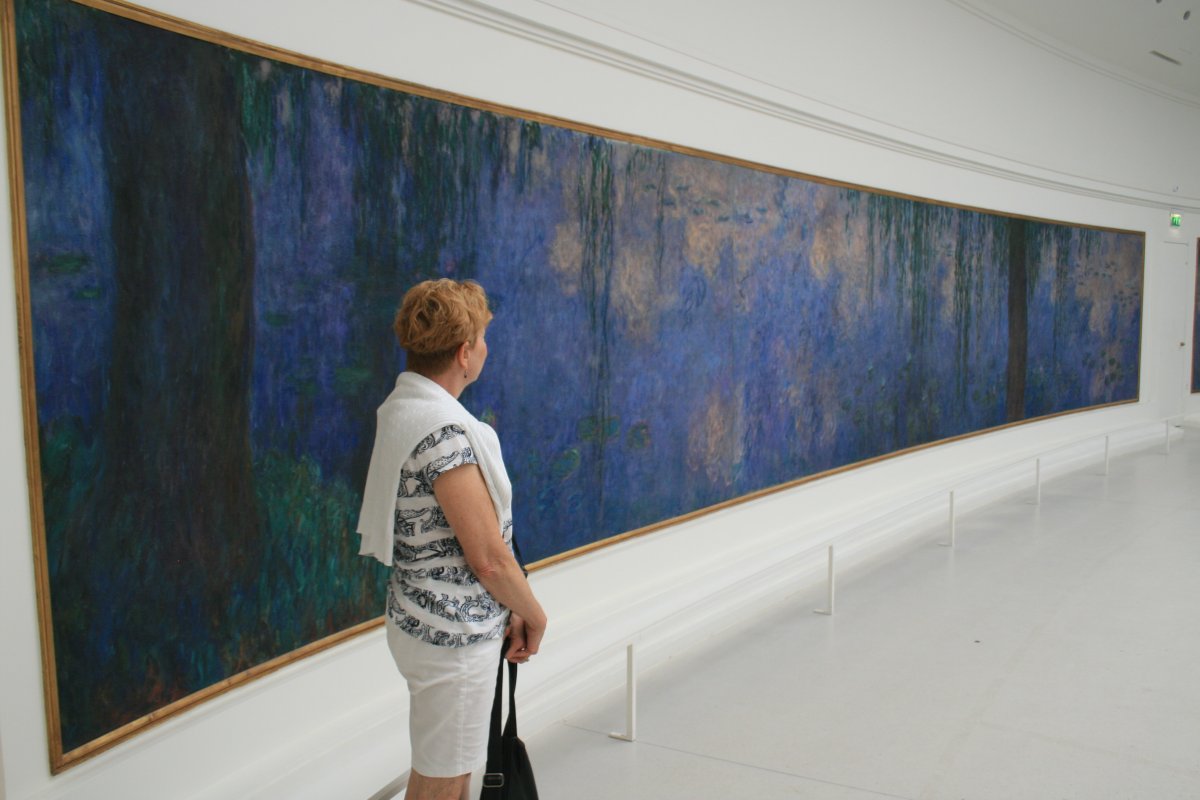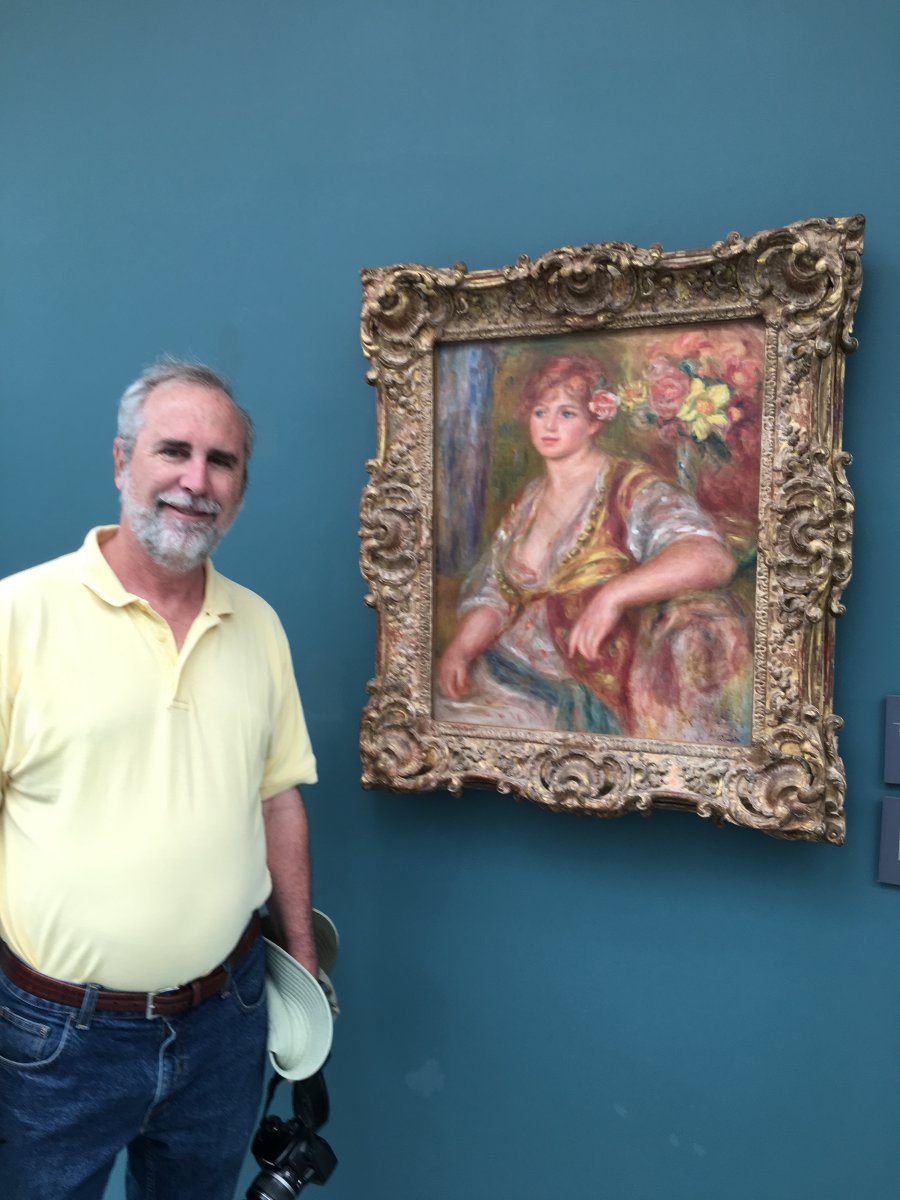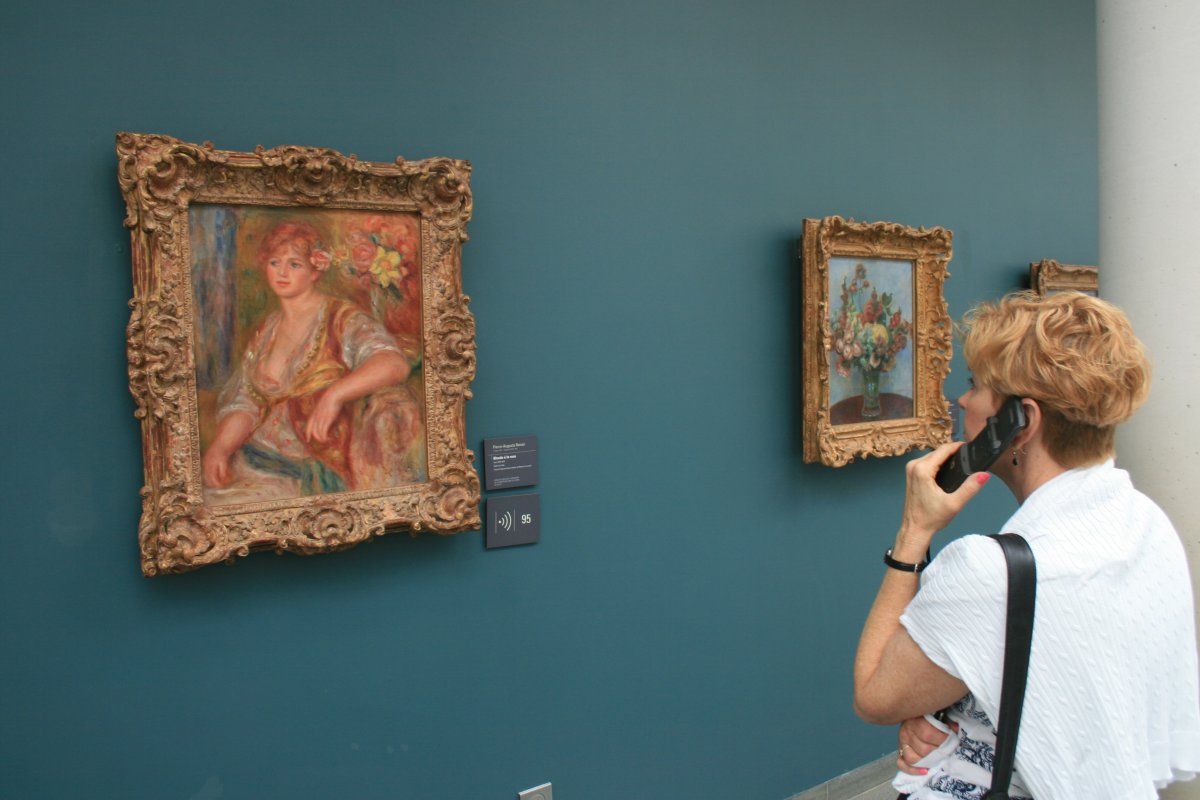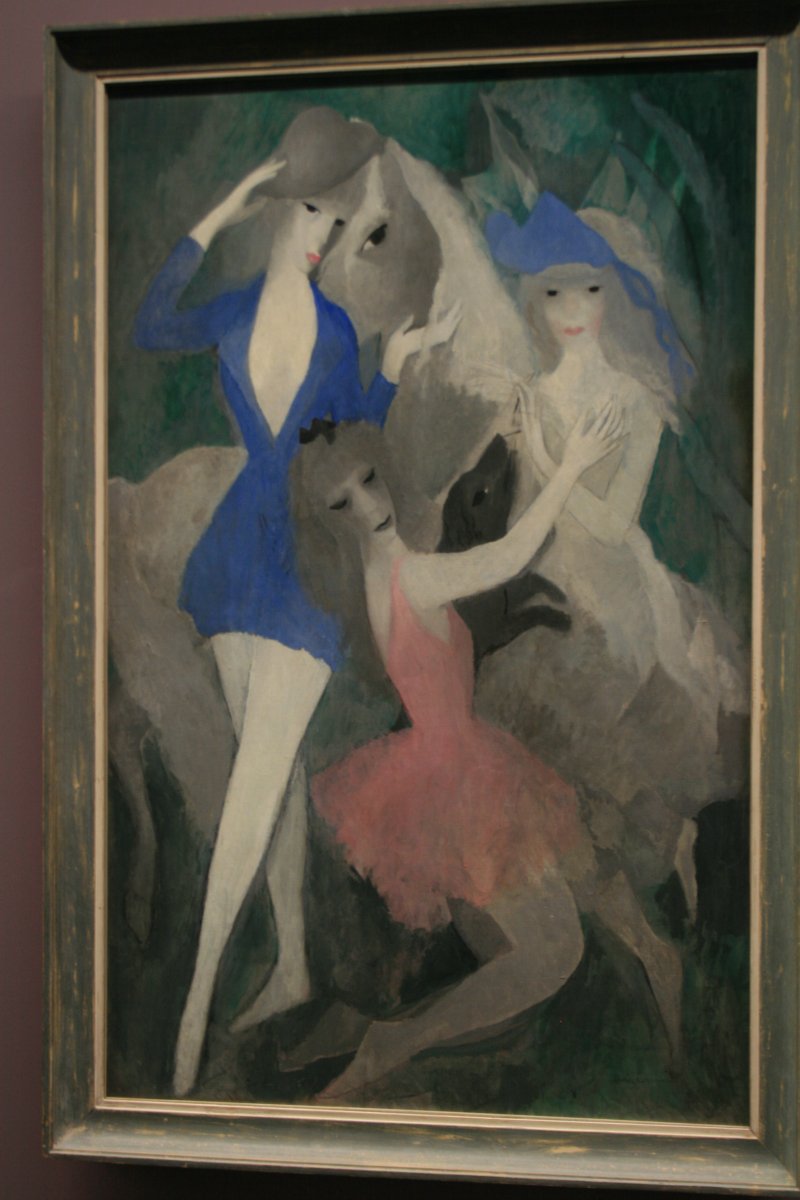France June 2016 - Musee de l'Orangerie
At one end of the Tuileries Garden is the Musee de l'Orangerie, an art museum featuring impressionist works. Their main claim to fame is Claude Monet's famous water lily murals.
Napoleon III had the Orangerie built in 1852, to store the citrus trees of the Tuileries garden from the cold in the winter. After the Fall of the Empire in 1870 and the fire at the Tuileries Palace in 1871, the Orangerie became a property of the State, which continued to use the Orangerie in its original function as well as for public events such as music concerts, art expositions, contests and dog shows until 1922.
After World War I, new changes came to the Orangerie. In 1921, the State gave the building to the Under-Secretariat of State for Fine Arts along with another building, the Jeu de Paume. The goal for these two buildings was to provide a space for living artists to display their works. At the time, Claude Monet was painting a series of Water Lillies (Nymphéas) paintings for the State that were destined for another museum, the Rodin. The President of the Council, Georges Clemenceau, wanted the paintings placed in the Orangerie instead. The Water Lillies donation to the Orangerie was finalized in 1922. Monet helped with the architectural design along with the architect Camille Lefevre.
